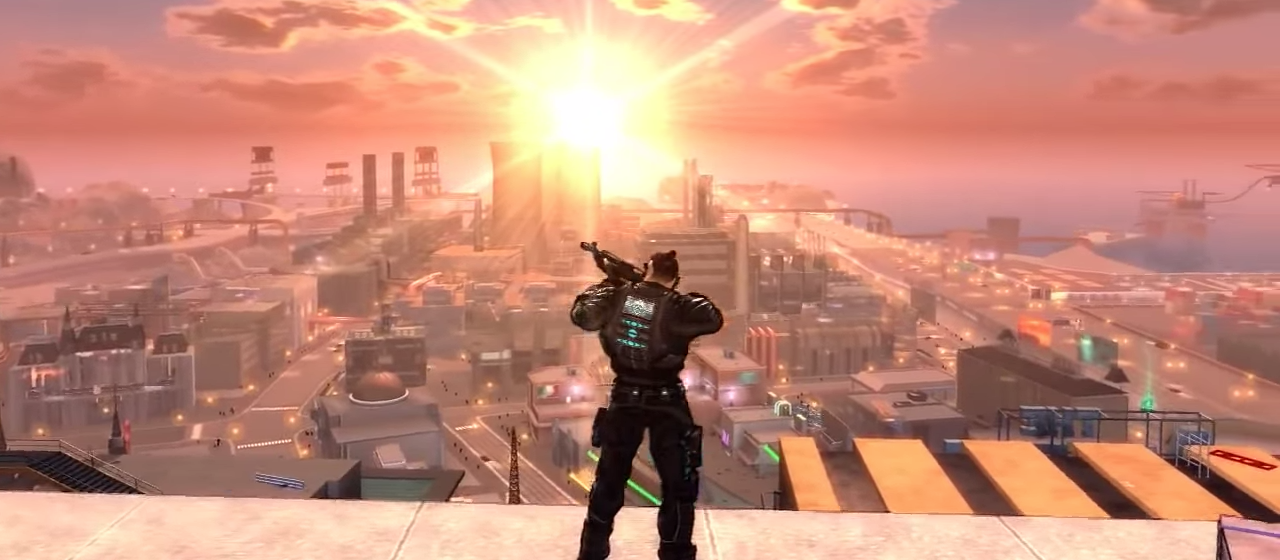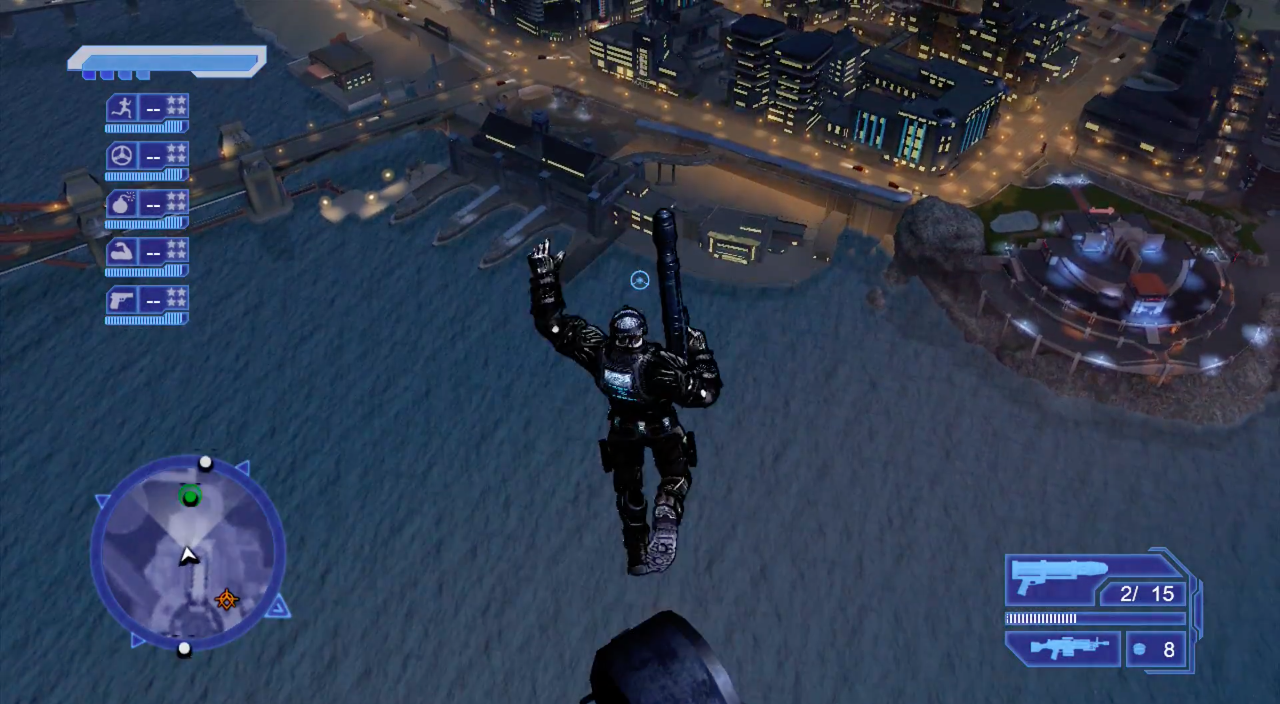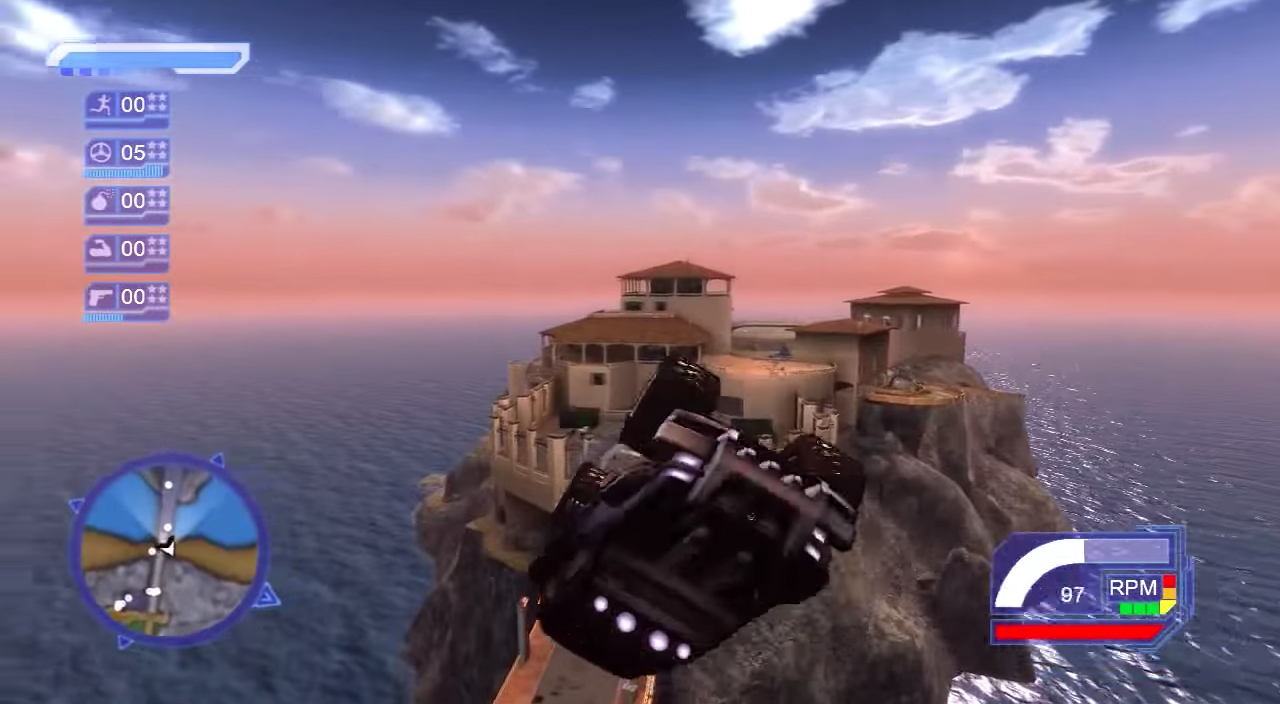

“With the world on the edge of anarchy, all forms of policing across the globe combined forces to form the Agency, but it wasn’t enough.”
Many people spent $60 on Crackdown in order to access the Halo 3 multiplayer beta. Since I was barely a teenager at the time—and still under the supervision of parents who didn’t want me playing a game where the fun bits involved killing other people—my enjoyment of both games was postponed by several years. My older brother was the first to be allowed access to the coveted M-rated games—Gears of War, Call of Duty 4, Bioshock. (Incidentally, the first M-rated game I remember buying was Far Cry 2, which features far more humans killing humans than any of those other games). Anyway, Crackdown received some critical praise but was overlooked because of the Halo 3 beta.1 Since many people only bought it for the access, it was viewed as a lesser game. But it’s not. It’s actually a great game in many respects, and scores incredibly high on the “mindless fun” scale.
The game is vaguely similar to a slew of other open-world third-person RPGs, in the sense that you are free to run rampant across the map, killing and destroying whatever catches your fancy. But it is not as grisly as many of those games, featuring cartoonish violence and superpowered characters, giving it a much more kid-friendly sheen than something like GTA IV or Fallout 3. The graphics feature a cel-shaded style that helps with the comic book vibe. It’s a unique look that many other games have utilized (before and after), but I believe Crackdown was the first Xbox 360 game to use it.2

Crackdown features various skills that are upgraded as you utilize them—driving, agility, explosives, firearms, and strength—which results in you eventually being able to jump several stories into the air, lift cars above your head, and jump out of the water while swimming. They all accrue naturally as you play the game, but there are also races (on foot across rooftops and in vehicles through the streets) that offer opportunities for bonus points. As your powers increase, you become more like a comic book hero than a police officer. So when you shoot a thug in the face with a rocket launcher, or beat a gangster into a pulp with your fists, it never really feels like “killing” in the same way that it does in more realistic games.
You begin the game as a rookie peacekeeper, employed by the Agency in fictional Pacific City, where three different ultra-violent gangs have overrun the place. There is a little bit of backstory that explains the paramilitary force and its genetic enhancements that provide your character with his powers, but it’s not really important at all. The game drops you into the central Agency hub, which is located in the middle of three territories, each controlled by one of the gangs. It’s a bit disconcerting at first because you have very weak abilities and are given little direction. There are a selection of Agency vehicles (which upgrade as your driving ability improves), and you can impound other vehicles as well. There’s no order to game—you can go after the strongest gang first (though I think some may be inaccessible at lower levels due to a lack of jumping ability), or do things piecemeal; you can work on increasing your powers endlessly before even touching the gang leaders.3

The addictive parts of Crackdown stem from the incremental increase in skills which are directly tied to the tasks performed rather than distributed by the player, and the whopping 800 orbs hidden throughout the city. Some of the orbs are not really hidden, but easily visible, though many are only accessible once the player’s jumping ability increases. Some are hidden so well that you could pass them numerous times and not realize they’re right under your nose. If you are committed to exploring every nook and cranny, it can be a good bit of fun doing a systematic search of the entire map, which is 100% open to the player. The top of the Agency tower, the tallest building the game, offers a really cool view of the city, and it’s neat to realize that you are looking at the actual game world, not a backdrop.
The game was developed by Realtime Studios to be addictive and fun. The game’s director, David Jones4 said in an interview: “Really the crux of the whole game design was, ‘How do we reward somebody for just having fun?’” I think they nailed this with progression mechanics that not only directly enhance the skills that are used, but by enhancing those skills opens up the game for increasingly more outrageous gameplay. You go from shooting and kicking to driving an SUV with a scoop on the front to flick other vehicles off the road and are eventually capable of jumping around the city like Spider-Man.

Though it has that weird stigma due to its ties to Halo 3, Crackdown has aged into a fondly-remembered game with a fairly sizable influence. It was a genuine original whose superhero-in-a-sandbox formula has been borrowed and utilized by numerous games, such as Infamous, Prototype, The Saboteur, and Just Cause 2.
Aided by a great electronic soundtrack, it is easy to lose yourself for a few hours just bouncing around the city. It’s almost soothing. It doesn’t have much depth, but its core gameplay is top notch and fun even after you’ve completed everything (though I don’t know if I’ll ever find all those dang orbs).
1. All these years later it is easy to forget that before Call of Duty 4, the Halo franchise was the console FPS to play. There weren’t endless clones of the military shooter diluting the market. I.e. Halo 3 was a huge deal, selling over 14 million copies, and was only outsold by a Kinect game that was packaged with consoles and Grand Theft Auto V. Crackdown sold 1.5 million.
2. Some other cel-shaded games include Afro Samurai, The Simpsons Game, Borderlands, Prince of Persia, Tales of Vesperia, Lollipop Chainsaw and Crackdown 2. It’s a cool style that I think really helps games when it comes to longevity. The cel-shading masks graphical shortcomings behind the comic veneer, and gives the games a bit of a “timeless” look. They’re obviously not pushing the limits of a system’s graphical capabilities, they’re going for a certain aesthetic.
3. I would suggest taking things slowly at first, as your character is horribly vulnerable when you begin the game. I remember trying to play online when I first got the game, and watching in awe as my partner tossed cars around and roundhouse kicked baddies fifty feet through the air. Meanwhile, I was stuck dying and respawning endlessly, getting stuck on obstacles that he cleared by twenty feet with his enhanced jumping ability.
4. Jones is also responsible for the Grand Theft Auto series, directing the development of the first two games which were released in 1997 and 1999.
Sources:
Totilo, Stephen. “Halo 3 Gives Crackdown a Boost — And That’s Just Fine with its Creator”. MTV. 2 February 2007.